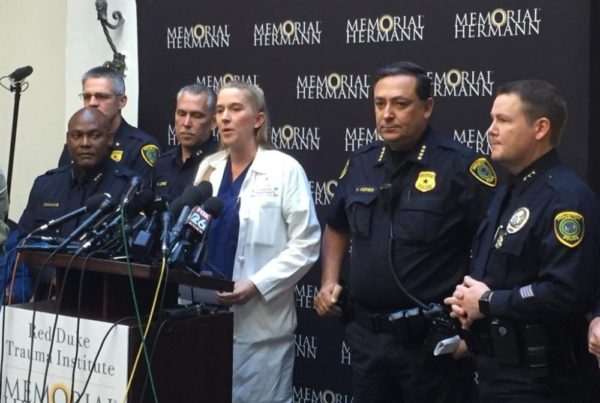Texas is home to ten state-run hospitals for people living with serious and persistent mental health issues. But many of the facilities – some of which were built in the mid-1800s – are in serious need of renovation, repair and even total replacement. That’s according to the so-called Cannon report from 2014, by state health officials.
Now, a revamp of the system is underway, and on Monday, the University of Texas at Austin’s Dell Medical School, in conjunction with Texas Health and Human Services and the Austin branch of the National Alliance on Mental Illness, unveiled the next phase of its redesign for the Austin State Hospital campus. It’s one part of the larger, $300 million statewide plan.
Karen Ranus is executive director of the Austin affiliate of the National Alliance on Mental Illness, or NAMI, and says while buildings on the Austin State Hospital, or ASH, campus have been renovated over the years, the hospital itself needs an overhaul.
“The facility itself is not state-of-the art at all,” Ranus says. “It’s a very dark space. It just doesn’t provide the kind of environment that people need to thrive. Nor does it provide the kind of environment that a staff needs.”
She says anyone who saw the campus would agree that “it really is horrible circumstances for people who are some of the most vulnerable people in our community.”
For example, Ranus says the rooms are dark, and four or even five people share a room. In general, she says because of the hospital’s design, it doesn’t allow staff to follow best practices for mental health care.
“When it was first constructed, it was probably constructed with whatever best practices were in place at the time. But certainly that’s not the case any more,” Ranus says.
She says the problem with the hospital is with the building itself, not the people who work there. She says the staff is doing the best it can under the circumstances.
“[It] has wonderful people on staff who care deeply about the work that they do,” Ranus says. “They are amazing … to make the best possible circumstances in caring for people considering the state that the building is in.”
While the plan is to redo the building itself, Ranus says it’s part of a broader plan to rethink how the hospital works, so that it more adequately treats mental health. Still, she says, the treatment environment also matters.
“We thrive on being in spaces that lend themselves to our feeling like we’re receiving good care, that are bright and light,” Ranus says.
She says in the future, the campus will hopefully be where people can get various mental health services, not just inpatient psychiatric treatment.
“The great hope is that this campus someday would continue to have organizations like ours and others on campus that would have wraparound services,” Ranus says.
Ranus also says that by the redesign team calling ASH the new center for “brain health,” it will hopefully help reduce stigma about mental health disorders. She says historically, people have viewed mental health issues as a problem of character rather than of health.
“All the science is showing us that that’s not the case,” Ranus says. “In shifting some of the language … we begin to embody this as the health issue that it is.”
Written by Caroline Covington.














